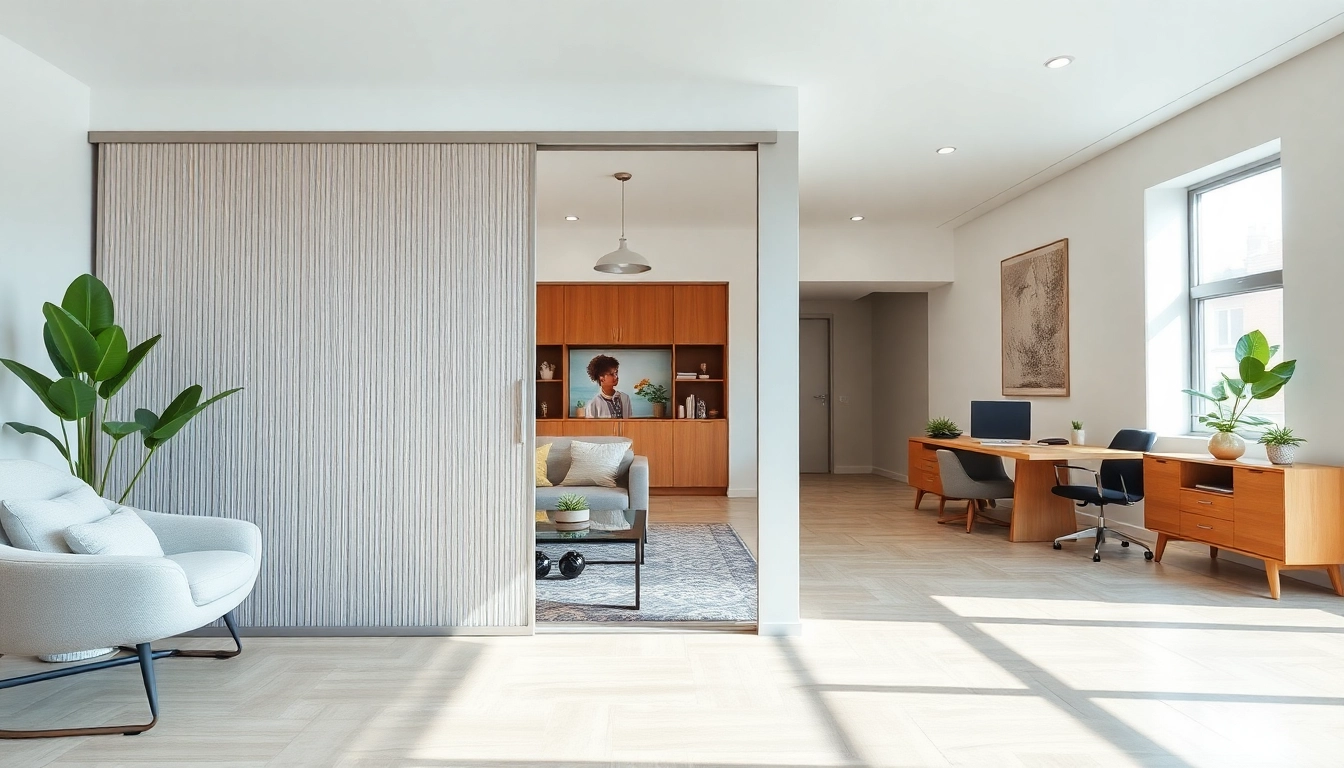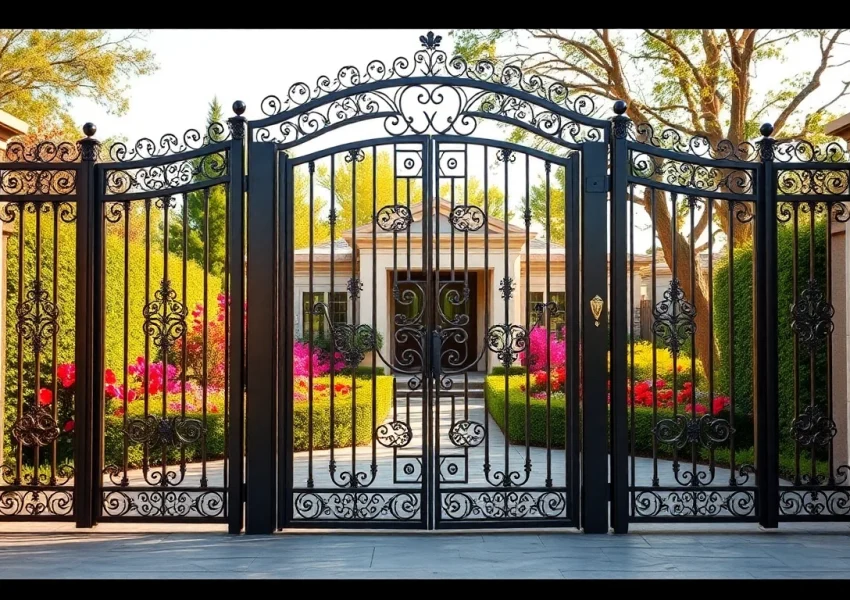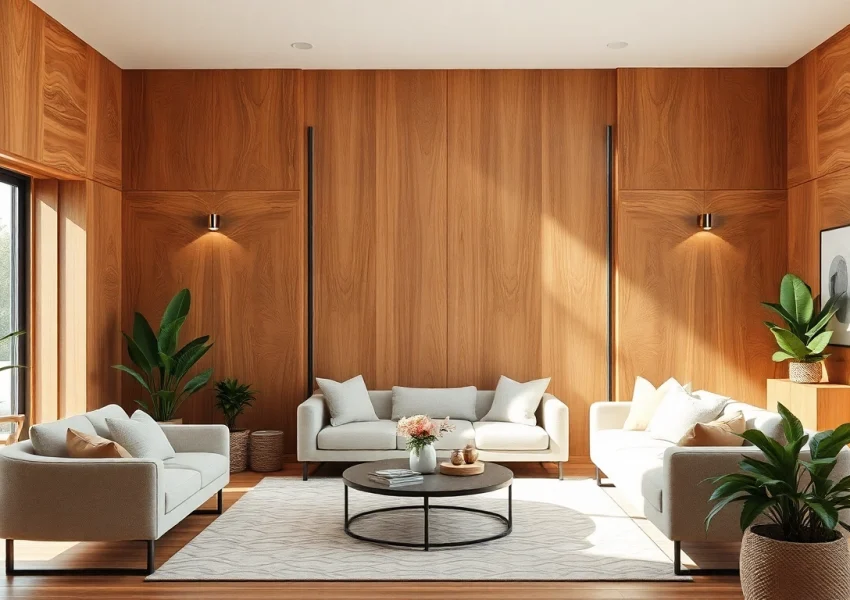Introduction to Sliding Partition Walls
As modern living spaces evolve, so does our need for versatile solutions that can adapt to changing lifestyles. One innovation leading the charge in flexible space utilization is the sliding partition wall. Whether you’re looking to create privacy in a shared area or enhance the functionality of an office, sliding partition walls offer a practical and stylish approach to spatial arrangement.
What are Sliding Partition Walls?
Sliding partition walls are non-load bearing walls that can be opened and closed horizontally, effectively transforming one large space into smaller, more usable zones. These walls typically glide along tracks and can either be wall-mounted or ceiling-mounted, allowing for seamless integration into various environments. Most commonly manufactured from materials like wood, glass, or metal, sliding partition walls can be designed to suit a wide range of aesthetics and functionalities.
Benefits of Using Sliding Partition Walls
- Space Optimization: Sliding partition walls help to maximize available space, offering flexibility and adaptability without permanent modifications.
- Noise Control: Many sliding partitions are designed to provide acoustic insulation, making them ideal for offices or shared living spaces.
- Aesthetic Appeal: With various materials and designs available, these partitions can elevate the overall look of a room.
- Cost-Effective: Sliding partition walls can serve as a less expensive alternative to traditional construction methods while providing similar functionality.
Common Applications in Homes and Offices
Sliding partition walls are versatile and can be utilized in numerous settings. In residential environments, they are often used to create home offices, define dining areas, or enhance open-concept living spaces. In commercial settings, these partitions can maximize meeting spaces, create private areas for work, or delineate seminars in event venues. Their adaptability makes them suitable for various applications, from high-traffic environments to serene home retreats.
Types of Sliding Partition Walls
Wall-Mounted vs. Ceiling-Mounted Options
When selecting a sliding partition wall, one of the main decisions is whether to go for a wall-mounted or ceiling-mounted option. Wall-mounted systems attach directly to the wall, allowing for easier installation and typically requiring less construction work. In contrast, ceiling-mounted systems are often more robust and can support heavier panels, providing greater flexibility in design and layout. Additionally, ceiling-mounted options remove the need for floor tracks, leading to a cleaner look and enhanced mobility.
Materials Used in Sliding Partition Walls
Sliding partition walls are available in a variety of materials, each with its benefits:
- Wood: Offers a warm, inviting aesthetic and can be customized easily for various finishes.
- Glass: Creates a modern, open feel while allowing natural light to flow between spaces.
- Metal: Often used in commercial settings, metal panels are durable and can provide an industrial look.
Styles and Designs to Fit Your Aesthetic
The design of your sliding partition wall can significantly impact the overall aesthetic of your space. From minimalist styles with clean lines to ornate designs featuring intricate patterns, the choices are nearly limitless. A sliding glass wall, for instance, can enhance natural light, while wooden panels can create a rustic ambiance. Additionally, there are options for incorporating artwork or custom graphics, making your partition not just functional but also a focal point of the room.
How to Choose the Right Sliding Partition Wall
Considerations for Space and Functionality
Before making a decision, it’s crucial to consider your space’s specific needs. Assess the dimensions of the area and how frequently you’ll be using the partitions. For example, in a home office, a sliding wall that can be fully opened might enhance collaboration, while in a bedroom, a more decorative option could offer aesthetic appeal without compromising space efficiency.
Cost Factors and Budgeting Tips
The cost of sliding partition walls can vary widely based on materials, size, and installation complexity. It’s essential to outline your budget early on and prioritize features that matter most to you. Look for suppliers that offer a range of options across different price points and consider seeking multiple quotes from installers to ensure you receive the best value for your investment.
Finding the Perfect Installer for Your Project
Getting the right installation service is crucial for ensuring your sliding partition wall functions properly and looks great. Start by researching local contractors who specialize in interior modifications, read reviews, and ask for past project references. A qualified installer will not only assist you with the technical aspects but can provide creative insights that could enhance your design.
Installation and Maintenance Tips
Step-by-Step Installation Guide
Installing a sliding partition wall can be a DIY project or handled by a professional. Here’s a general guide to assist you if you choose to go the DIY route:
- Measure the Space: Accurately measure your area to determine the size of the partition.
- Choose Your Mounting Type: Decide between wall-mounted or ceiling-mounted systems based on your design preferences and structural needs.
- Gather Tools and Materials: Make sure you have all necessary tools, including a level, drill, and screws, as well as your chosen partition wall material.
- Install the Track: Follow the manufacturer’s instructions to install the track, ensuring it’s straight and level.
- Attach the Panels: Hang the panels on the track carefully, following the proper alignment to ensure smooth operation.
- Test the Movement: Ensure the panels slide easily and check that any locks or stops function correctly.
Regular Maintenance Practices for Longevity
To keep your sliding partition wall in prime condition, implement regular maintenance practices:
- Clean tracks and panels periodically to prevent dirt buildup.
- Inspect mechanisms for wear and tear, making adjustments or replacements as necessary.
- Address any sticking or misalignment issues promptly to prevent more significant problems.
Common Issues and Solutions
Sliding partition walls can encounter a few common issues over time. Here are some solutions:
- Sticking Panels: Check for debris in the track and ensure panels are properly aligned.
- Difficulty Sliding: Lubricating the track can often resolve this issue.
- Misalignment: Reassess the installation to ensure all components are correctly fitted and level.
Sliding Partition Walls in Interior Design
Maximizing Space with Creative Designs
Utilizing sliding partition walls creatively can dramatically impact interior design. They not only create functional spaces but also allow for a dynamic approach to room aesthetics. For example, a large living room can be transformed into an entertaining area and a private workspace using sleek glass partitions. Considerations such as color harmony, material textures, and the interaction between natural and artificial light can further enhance the overall design.
Case Studies: Successful Installations
Exploring successful installations offers valuable insights into practical applications of sliding partition walls. For instance, an open concept office successfully implemented sliding partitions to create temporary breakout rooms. This agile workspace design enabled teams to collaborate while facilitating privacy when required. Similarly, in residential settings, families have utilized sliding partitions to create multifunctional living spaces that adapt to the flow of their daily lives.
Future Trends in Partition Wall Innovations
The future of sliding partition walls looks bright with emerging trends focusing on sustainability and technology. Innovations such as eco-friendly materials and smart partitions equipped with automated systems are gaining popularity. These advancements not only enhance functionality but also foster a more sustainable approach to interior design, meeting the growing demand for environmentally conscious solutions.






